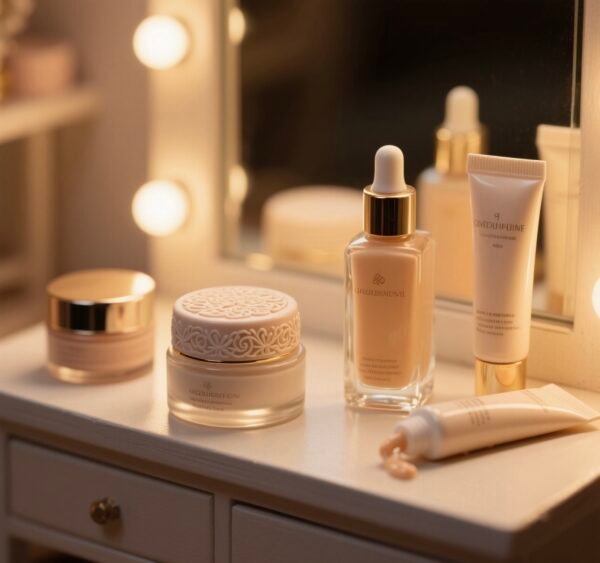Introduction
Consumers today expect more from cosmetics than aesthetic enhancement alone. Safety, hygiene, and sustainability have become core purchase drivers. Cosmetic packaging plays a critical yet often overlooked role in maintaining product purity, preventing microbial contamination, and extending shelf life.
While preservatives within formulations control microbial growth, integrating antimicrobial agents into packaging materials themselves offers proactive, long-lasting protection. This dual-layered defense is emerging as a strategic advantage for brands committed to quality and consumer wellbeing.
Why Packaging Matters in Microbial Control
Cosmetic products face microbial contamination risks from:
- User contact: Fingers or applicators transfer bacteria and fungi into products.
- Air exposure: Packaging that allows repeated air exchange introduces environmental microbes.
- Moisture-rich formulations: Creams and lotions create ideal conditions for microbial proliferation.
Such contamination not only reduces product efficacy and stability but also threatens user health, causing skin irritation, infections, or allergic reactions.
Antimicrobial Agents: Effective Choices for Cosmetic Packaging
Silver-Based Agents
Silver ions disrupt microbial cell membranes and DNA replication processes.
- Application: Plastic bottles, tubes, jars (PP, PE, PET) for creams and lotions.
- Benefits: Broad-spectrum, durable, minimal aesthetic impact on packaging appearance.
Zinc-Based Agents
Zinc inhibits key microbial enzymes essential for survival.
- Application: Tube caps, foam dispensers, compact cases.
- Benefits: Mild, effective, cost-efficient for mass-market skincare and makeup lines.
Copper-Based Agents
Copper generates reactive oxygen species that destroy microbial proteins and genetic material.
- Application: Less used in direct-contact cosmetic packaging due to allergenicity concerns but beneficial for dispensers, metal applicators, and external packaging hardware.
Strategic Value for Cosmetic Brands
- Extended Shelf Life & Product Integrity
Prevents microbial ingress and degradation, maintaining formulation stability and sensory qualities over time. - Clean Beauty Positioning
Supports reduced preservative systems by minimizing external contamination risks, aligning with consumer demand for minimal additives. - Strengthened Brand Trust
Demonstrates commitment to consumer health and product safety, building loyalty in premium and dermocosmetic segments. - Regulatory Compliance Facilitation
Helps maintain microbial safety standards across product shelf life, easing compliance with EU Cosmetic Regulation and FDA guidelines.
Manufacturing Integration Considerations
- Masterbatch Compounding: Silver or zinc antimicrobials are blended into polymers pre-m
- Surface Coatings: Provide surface-level protection but are less durable than embedded solutions.
- Migration Testing: Confirms safety by ensuring agents do not leach into formulations at harmful levels.
Challenges to Navigate
- Cost Impact
Increases material costs by 5–12%, requiring premium positioning or consumer education to communicate added value. - Material Compatibility
Formulations must not alter packaging clarity, color, or mechanical integrity. - Claims Management
Marketing must avoid implying “sterility,” focusing instead on antimicrobial protection validated by ISO 22196 or JIS Z 2801 testing.
Future-Focused Opportunities
- Nanotechnology
Nano-silver and zinc oxide enable higher antimicrobial efficacy with minimal material or aesthetic impact. - Sustainable Packaging Integration
Combining antimicrobial agents with biodegradable or recyclable polymers addresses hygiene and environmental responsibility together. - Smart Antimicrobial Systems
Moisture or pH-triggered release technologies are under research for adaptive protection aligned with product use cycles.
Conclusion
Antimicrobial cosmetic packaging is no longer an optional enhancement – it is a strategic imperative for brands focused on quality, consumer safety, and regulatory excellence. By safeguarding formulations against contamination while supporting clean beauty claims and sustainability goals, antimicrobial-integrated packaging defines the future of competitive, science-backed beauty branding.
✉️ Partner With Us
Our silver, zinc, and copper-based antimicrobial solutions are engineered for cosmetic packaging applications, ensuring safety, efficacy, and global compliance. Contact us to elevate your brand with packaging that protects products, consumers, and your reputation.


-300x210.jpg)
